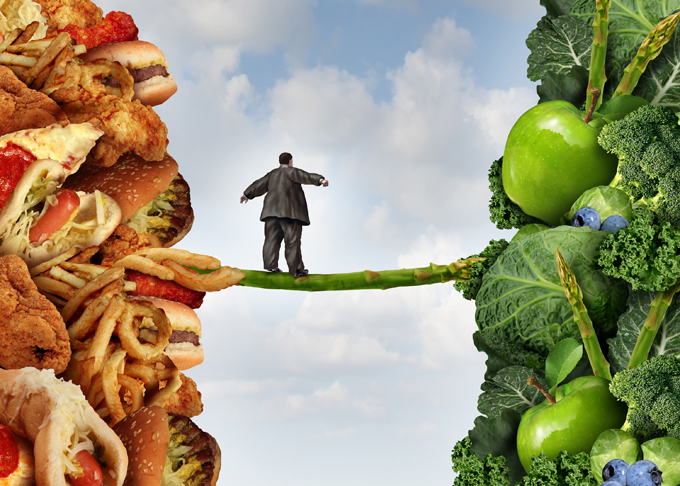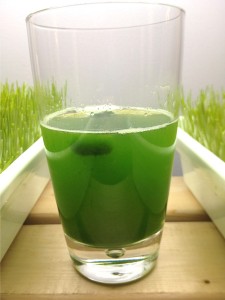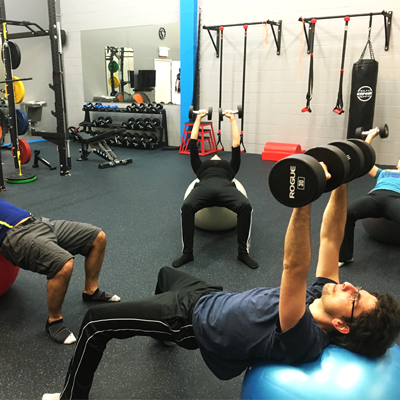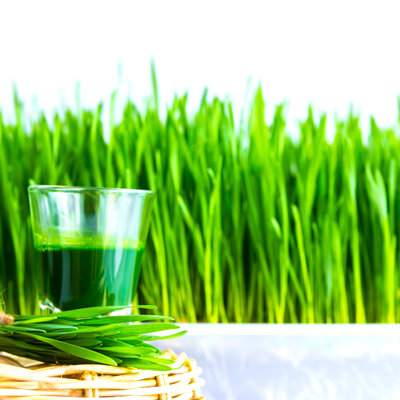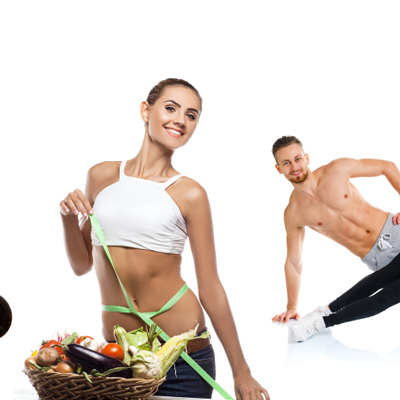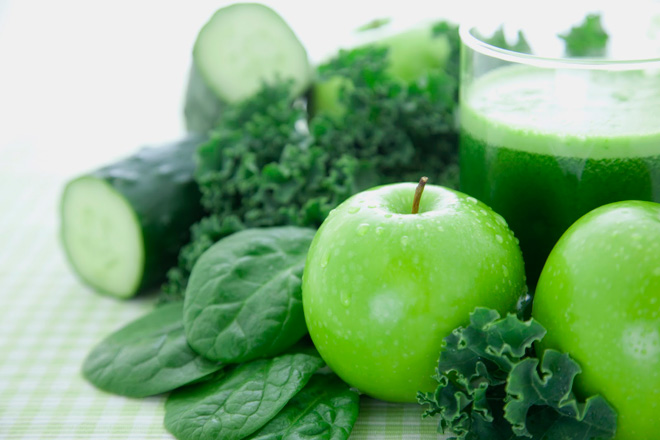I work very closely with individuals as they succeed in making a transition to a healthy plant-based diet. Success, as I tell every new client, is not about forcing yourself to eat healthier while restricting the foods that you enjoy the most. Real success is when you begin to naturally gravitate to the foods that best nourish you, while losing interest in choices that are harmful to your body. Only then will eating healthy no longer mean being on another “diet” that you are trying out for a few months, or something that requires lots of willpower each and every day. Eating healthy will simply become what you do, something that you enjoy, and a part of who you are. It all begins with a deep sense of respect for yourself, a conscious decision to turn your life around, and an understanding of how to proceed.
Below is a general guide that serves as an example of what I ask most of my clients to do at the start of their food revolution. It has served as an excellent stepping stone, and those who have followed it closely have had a much easier and more joyful transition to a healthier lifestyle. Best results are achieved when we make sprouts & microgreens, wheatgrass juice, algae and sea vegetables a part of our daily routine. These foods are easily accessible and are clearly beneficial to our health.
Early morning:
As soon as you get up head to your freezer, place 2 wheatgrass cubes in a glass of water, and drink before the cubes melt completely. You can pour a second glass of water to finish what is left of the wheatgrass, or just place the remainder of the cubes directly in your mouth and swirl them around- this is great for your gums.
Tips: Wheatgrass is the richest source of disease fighting phytochemicals, antioxidants and enzymes, and is superior to all other blood builders. It will have a cleansing effect on your body, helping to mobilize toxins so that they can be flushed out of your system. You will grow more accustomed to its taste and effects within the first 2 weeks of taking it daily. Do not skip a day, especially when just starting out. Wheatgrass should always be consumed on an empty stomach, and wait a minimum of 30 minutes before having any food.
Breakfast:
 As part of step 1 you will be learning how to sprout hulless oats, kamut and rye. These high energy grains will be the main ingredients of your breakfast. Sprout the grains for about 36 to 48 hours by following the instructions on our MarkitoNutrition Sprouting Guide (included with your sprouting kit). For example, if you begin sprouting the grains on Monday they should be ready for consumption by Wednesday morning. And in between, on tuesday, you would be starting a new batch which would be ready for thursday morning, and so on. When the sprouted grains are ready and it’s time for breakfast, place your desired quantity into your breakfast bowl, sprinkle some chia seeds on top, and add some fruit such as a banana along with some raisins. Finally, top it off with some homemade almond milk and enjoy. Note: if suffering from digestive issues you may need to exclude the fruit, and you may do better with smaller pseudo grains such as amaranth, teff, millet and buckwheat.
As part of step 1 you will be learning how to sprout hulless oats, kamut and rye. These high energy grains will be the main ingredients of your breakfast. Sprout the grains for about 36 to 48 hours by following the instructions on our MarkitoNutrition Sprouting Guide (included with your sprouting kit). For example, if you begin sprouting the grains on Monday they should be ready for consumption by Wednesday morning. And in between, on tuesday, you would be starting a new batch which would be ready for thursday morning, and so on. When the sprouted grains are ready and it’s time for breakfast, place your desired quantity into your breakfast bowl, sprinkle some chia seeds on top, and add some fruit such as a banana along with some raisins. Finally, top it off with some homemade almond milk and enjoy. Note: if suffering from digestive issues you may need to exclude the fruit, and you may do better with smaller pseudo grains such as amaranth, teff, millet and buckwheat.
Tips: As you begin your transition to a natural plant-based diet, I recommend that you eat a big breakfast of sprouted grains to help calm your cravings while providing you with lots of energy. Remember to take your time to chew very well; you are rebuilding a digestive system that may not be accustomed to whole foods. A few months or more later, I may suggest that you delay your breakfast and perhaps not eat as much early in the day. This is because by then you will no longer be struggling with the food cravings you once had, you will be absorbing and utilizing nutrients more efficiently, and the longer you wait each morning before eating solid food the more time your body has to naturally detox. Eventually, and especially if you have limited time to eat, you may choose to blend your breakfast into a pudding. You can also try our raw, ready-to-eat dehydrated sprouted breakfast cereal, Rawrrr Sprout PowerTM. This can serve as a breakfast back-up when needed, or as a snack anytime during the day.
An Ancient Truth: Throughout our history, all grains, beans, nuts and seeds, in their natural form, were not consumed without first being soaked, fermented, or sprouted. That’s how you get rid of the anti-nutrients, magnify the nutritional content, and improve your digestion and absorption of these foods. Sprouting also substantially decreases wheat gluten proteins.
B12:
Before, during or after your breakfast, take a vitamin B12 supplement.
Tips: B12 is produced naturally by soil based microorganisms. In our modern, industrialized, germaphobic world, where we over-sanitize our food and are no longer connected to high quality organic soils, vitamin B12 deficiency is indeed a problem for a majority of the population. All cells, including red and white blood cells, require B12 to grow and divide properly. B12 is also essential to the making of DNA, RNA, and myelin, the white sheath protecting nerve fibres. Without B12 your central nervous system begins to erode, and irreversible nerve damage becomes a risk. Contrary to popular belief, animal-based foods do not provide a digestible and complete form of this essential nutrient. Most people, including meat eaters, are B12 deficient, and so supplementation of this nutrient has become critical.
Blue-Green & Green Algae:
Take a serving of algae at least once a day on an empty stomach. You could take it in the morning with your wheatgrass, half an hour before your lunch, or in the afternoon a few hours after eating. It will help to reduce your sugar cravings, enhance your immune system, and help you flush out toxins such as heavy metals stored in your system.
Tips: Read more about the benefits of Chlorella as well as Aphanizomenon flos-aquae (AFA) to understand why I highly recommend these two forms of algae, especially when beginning the transition to a healthier lifestyle.
Enjoy our MarkitoNutrition Power Drink: this is an easy option for a mid-morning or mid-afternoon snack. Mix in a scoop of raw sprouted protein powder and some algae into a glass of homemade almond milk to create a health boosting drink. You may use one part almond milk and two parts water, or go half – half. The protein powder is not a “must have” supplement, however, it can greatly assist you during your transition to a proper plant-based diet, helping to reduce cravings until you learn how to prepare new recipes.
Sunflower microgreens:
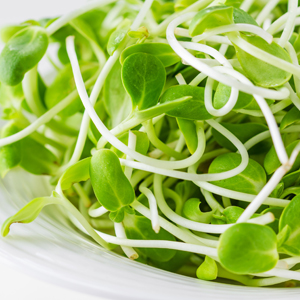 As part of this step 1 program, I would like you to take the time to create a recipe using sunflower microgreens. This can serve as a lunch, a side salad, or a simple snack. Many clients enjoying eating the fresh sunflower we give them straight out of the container. This is great, however, the purpose of this program, especially in the beginning, is to get you to learn new recipes and to become more creative with how you prepare your food. We have to think long-term, and the primary goal is not just to eat healthier foods, but to learn how to thoroughly enjoy these foods for a lifetime. We also encourage daily consumption of several other very beneficial microgreens such as fenugreek and pea shoots. Try our super salad recipe that contains all three.
As part of this step 1 program, I would like you to take the time to create a recipe using sunflower microgreens. This can serve as a lunch, a side salad, or a simple snack. Many clients enjoying eating the fresh sunflower we give them straight out of the container. This is great, however, the purpose of this program, especially in the beginning, is to get you to learn new recipes and to become more creative with how you prepare your food. We have to think long-term, and the primary goal is not just to eat healthier foods, but to learn how to thoroughly enjoy these foods for a lifetime. We also encourage daily consumption of several other very beneficial microgreens such as fenugreek and pea shoots. Try our super salad recipe that contains all three.
Lunch:
I want you to learn how to develop some easy “go to recipes”. Our bean mix salad is an example of a recipe that is simple to prepare, filling, and quite tasty as well. However, since you are just beginning to learn how to sprout, and may not be completely organized just yet, you can find a low sodium pre-packaged hummus on the market, and make some wraps with it while including some sunflower microgreens. Eventually you will be sprouting many different seeds, making your own healthier hummus, and have enough “go-to” recipes that you won’t need to depend on packaged foods. Check out our recipe page.
Dinner:
I encourage you to learn how to prepare one of our warm recipes for dinner, such as the vegan shepherd’s pie or sprouted lentil stew. Keep the leftovers for the next day. Eventually you will find your own rhythm, knowing how much food to prepare and making everything work smoothly in your routine. My article entitled ”The Non Chef” provides specific tips on how to get into the groove of preparing easy and delicious recipes.
Snacks:
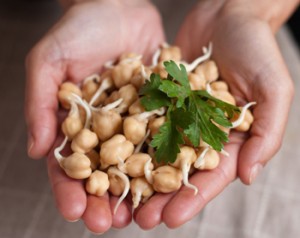 When cutting out animal-based food, many people make the mistake of consuming too much sugar (fruits) and fat (nuts and seeds). The best way to replace these calories is with sprouted grains and legumes. For example, instead of snacking on nuts when you are feeling hungry, try snacking on sprouted chickpeas. They are much lower in calories and provide you with a great amount of energy and protein. I advise my clients to take a cup or more of sprouted chickpeas to work with them in a tupperware.
When cutting out animal-based food, many people make the mistake of consuming too much sugar (fruits) and fat (nuts and seeds). The best way to replace these calories is with sprouted grains and legumes. For example, instead of snacking on nuts when you are feeling hungry, try snacking on sprouted chickpeas. They are much lower in calories and provide you with a great amount of energy and protein. I advise my clients to take a cup or more of sprouted chickpeas to work with them in a tupperware.
A final word:
Local clients that train at my studio one to three times a week have an easier time transitioning to better food choices. The reason for this can be summarized in one word: education. I make sure to use every opportunity to provide them with the information and tools that empower them to make significant lifestyle changes. The more we know the better we do, and that’s why it is so important to be continually exposed to proper information, such as learning how to correctly interpret food labels, how to separate misinformation from actual science, and how to recognize and overcome food addictions. I work closely with people, especially when they are suffering from health issues, and it is a joy to watch them become empowered with the tools they need to take back control of their lives. I encourage everyone to start by going through this website, watch the videos, read the articles, try the recipes and then make them better as you add your own touches. Do not hesitate to reach out if you have questions. I will do my best to keep posting and sharing more of the information that has helped my clients achieve great success. Now it’s up to you…
Marc Jaoudé
Naturopath, Health Educator
Nutrition & Exercise Specialist

